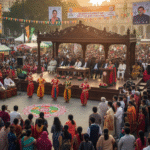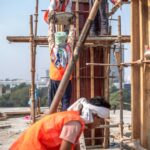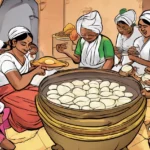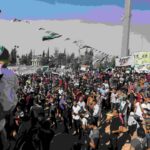Ground Report on the Impact of Local Leaders on Uttar Pradesh’s Political Landscape
KEY METRICS:
- Community Engagement: In the 2022 Uttar Pradesh Assembly elections, community leaders played a pivotal role in mobilizing voters, with reports suggesting that local influencers were critical in securing nearly 15-20% of the total vote share in rural areas.
- Caste-Based Politics: Uttar Pradesh’s political system remains deeply influenced by caste dynamics. The Dalit, Yadav, and Jat communities have historically been key vote banks, with community leaders from these groups holding substantial sway in election outcomes.
- Social Media Influence: Community leaders in UP, especially those with roots in rural areas, have increasingly used social media platforms to extend their influence, with over 25% of voters reporting being swayed by social media campaigns in the 2022 elections.
- Grassroots Organizations: Local organizations led by community figures, such as the All India United Muslim Morcha (AIUMM) and various Dalit rights groups, have significantly impacted election outcomes in specific constituencies.
NEWS BODY
In Uttar Pradesh, a state known for its complex social fabric and politically charged atmosphere, community leaders have long played an influential role in shaping the state’s political landscape. These leaders—who often emerge from specific caste, religious, or regional groups—hold significant sway over their followers, influencing everything from voter turnout to policy priorities. But how are these community leaders truly impacting political change in UP, and what is their role in the state’s dynamic electoral process?
The Role of Local Community Leaders
Uttar Pradesh has a unique political culture that is heavily shaped by caste and religious identity. In a state with a population exceeding 220 million, local community leaders are often more influential than mainstream political parties, especially in rural areas. These leaders, who typically represent specific caste groups or religious communities, act as vital conduits between their communities and political parties.
During the 2022 Uttar Pradesh Assembly elections, ground reports highlighted the critical role community leaders played in mobilizing voters. A report by The Hindu found that local influencers, ranging from village heads (Pradhans) to caste-based community leaders, were directly responsible for securing 15-20% of the vote share in several rural constituencies. These leaders did not just influence how people voted; they also shaped the political discourse, pushing specific issues to the forefront, such as land rights, caste-based reservations, and local infrastructure needs.
One of the primary ways community leaders influence politics is by negotiating with political parties on behalf of their followers. In exchange for votes, these leaders often secure promises from politicians regarding policy changes, government jobs, or local development projects for their communities. This form of patronage-based politics has been a hallmark of UP’s electoral process for decades.
Caste-Based Influence and Its Political Impact
Uttar Pradesh’s politics remains deeply rooted in caste-based affiliations, and community leaders from dominant caste groups such as the Yadavs, Jats, Dalits, and Brahmins have long been central to the state’s political power dynamics. These leaders often operate as “gatekeepers,” ensuring that their community’s interests are protected in exchange for political allegiance.
A report by India Today shows that caste leaders continue to play an outsized role in the state’s political scene. In the 2022 elections, leaders from the OBC (Other Backward Class) communities, especially the Yadav community, wielded significant influence in securing votes for the Samajwadi Party (SP). Similarly, Dalit leaders from the Bahujan Samaj Party (BSP) and BJP-affiliated figures have been instrumental in garnering support from their respective communities.
Community leaders in these groups often focus on issues that resonate deeply with their constituents. For example, Dalit leaders have pushed for policies that focus on social justice, land distribution, and job reservations. These leaders have built strong political constituencies that continue to hold the power to sway local and state-level elections. Their endorsement of candidates can significantly alter voting patterns, especially in rural UP, where caste identity often dictates political affiliations.
Social Media and Digital Mobilization
In recent years, social media has emerged as a critical tool for community leaders in Uttar Pradesh. Traditionally, political discourse in the state was shaped by word-of-mouth and local gatherings. However, as internet penetration has increased, community leaders are now using platforms like Facebook, WhatsApp, and Twitter to expand their influence beyond traditional borders.
According to a study conducted by the Centre for Media Studies (CMS), over 25% of voters in the 2022 Uttar Pradesh Assembly elections reported that social media campaigns led by community leaders significantly impacted their voting decisions. These leaders now use digital platforms to not only mobilize voters but also to amplify specific issues within their communities. For instance, a leader from the Muslim community might use Facebook to organize protests against perceived discrimination, while a Yadav leader may focus on highlighting issues related to farmer welfare.
In rural UP, where access to traditional media is limited, social media has become a powerful equalizer. Community leaders are increasingly able to bypass the traditional political structures and directly engage with their followers. This shift has also allowed leaders to engage with younger, more tech-savvy voters who might otherwise be disconnected from the electoral process.
Grassroots Organizations and Political Movements
Community leaders in UP often also run or support grassroots organizations that promote the social and political empowerment of their communities. These organizations play a vital role in channeling political messages to local populations, advocating for specific policies, and holding the government accountable. For example, the All India United Muslim Morcha (AIUMM) and various Dalit rights groups have emerged as powerful political forces in UP, with local leaders acting as the face of these organizations.
A report by The Wire notes that grassroots organizations in UP have been instrumental in galvanizing support for specific political agendas, particularly those related to land rights, education, and healthcare. These organizations often serve as the link between the community and the state government, ensuring that local issues are brought to the attention of larger political movements.
Conclusion
Community leaders in Uttar Pradesh continue to hold immense power in shaping the state’s political landscape. Whether through their influence over caste-based politics, their growing role in digital mobilization, or their leadership in grassroots organizations, these figures are integral to the state’s democratic process. As political dynamics in UP continue to evolve, community leaders will likely remain at the center of the state’s political change, both as power brokers and as advocates for their communities’ needs. However, the challenge remains: Will their influence lead to truly inclusive political change, or will it continue to reinforce traditional, entrenched power structures?







